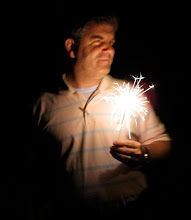
This summer in Maine a 60-foot-tall pine tree whose base had rotted, partially fell perilously close to the cabin my wife and I were staying in - it didn't fall all the way down (which was good). It got hung up in the upper limbs of two adjacent trees at an angle between 60 and 70 degrees to the ground (if 12 o'clock is 90 degrees straight up - about 1:00). The tree branches holding it up were cracking about every 30 minutes or so - without intervention, the tree's natural path was going to be to fall on the roof and cause lots of damage (Google "cutting down a tree the wrong way" and you will find many humorous videos of what might have happened . . ).
Just So You Know - We Survived . . .
Well, we tried to shove it over, push it over with a ladder, climb on the roof - tie a rope as high up as we could and pull it over --- No good. So, a wise friend who came over to help stepped in and said quietly, "You're trying too hard." He went to his truck, got out a pulley, a yellow nylon strap and a rope with a hook on one end. In about 20 minutes, we strapped the pulley to a tree about 25ft back, tied the base of the tree with the hook to the rope, and looped the other end through the pulley and back to one of the hooks on the front of his truck. Again he said quietly, "You're gonna want to step back." He backed up and the base was pulled back from the front of the cabin, the top fell away and the tree fell down with a boom - safely away from the cabin (and any people) ---
Timmmmberrrrrr!!!!!
Two things: 1. When you know what you're doing, the flow of work goes easier and faster (including set-up and clean-up) - sometimes it pays to have someone around who knows where the stones are in the stream. And 2. Mechanical advantage is a beautiful thing to watch in action. If you want to make things easier for yourself in the woods, on a lake, at home or on a project - consider using pulleys. Each pulley, properly sequenced, significantly reduces the amount of effort needed to pull or lift a load.

Natural Tendency is a very important aspect to consider in solving a problem, or pursuing any goal or endeavor - Which way is the river running? Which way is the traffic flowing? What force is pulling?-- and, in what direction?
I believe that thinking through what is driving an issue, a problem, a point of view or a process (natural or man-made) - will lead most often to the solution or resolution. A person's incentives and strengths will usually determine their most likely actions. If you have a list of activities to do and you're going to get rewarded for one of them, you tend to do that first. Similarly, if you are good at some activity, the natural tendency is to do that first and leave the stuff you don't like to do until later - it's human nature. Keeping this in mind can prove very useful in project assignments with a team, relationship building and in negotiations.
Stomach Grumbling or Losing Track of Time?
There is a lot written about the concept of behavioral tendencies, with one area being Maslow's Hierarchy of Needs (diagram below) - where the bottom of the triangle is self-preservation, leading to the top which is self-actualization.

According to Maslow, the level at which a person stands on this diagram will determine to large degree how they will behave. The specific levels are not as widely accepted as the concept of behavior being directed by what's on a person's subconscious mind--
So You Know the Motivation - Then What?
Jujutsu or Jiu-Jitsu is a Japanese martial art style based on the the principle of using an attacker's energy against him, rather than directly opposing it. In translation, Jujutsu means "way of yielding". Jujutsu techniques redirect physical motion to gain advantage. Stopping motion takes a lot more energy than redirecting it. Finding ways to use the other person's passion and energy as part of the solution leads to win-win successes. Identifying incentives and strengths (or pulling and pushing forces), defining wants/needs and expectations, will set you up for what is coming at you - Then, adeptness at using virtual leverage, mechanical advantage, or Jujutsu in issue resolution will determine how you handle it--
Next time you find yourself stuck in a seemingly insurmountable problem - step back and consider the Natural Tendency - maybe you are trying too hard.
Related Information on the Web:
Rescuing a Canoe Caught In Rapids:
Abraham Maslow's Hierarchy of Needs further discussed:
Jiu-Jitsu Demonstration In Los Angeles:
Recommended Books:
Flow - Psychology of Optimal Experience by Mihaly Csikszentmihalyi
Now, Discover Your Strengths - by Marcus Buckingham & Donald O. Clifton
And, a Comic:

